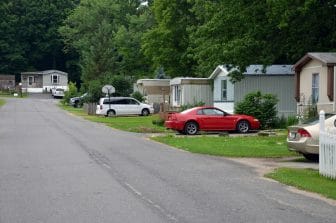There are a few instances of homeowners buying mobile home parks in the 1970s, but not much earlier. Beginning in the 1980s, two principal types of co-ops were being used to bring resident ownership to the community – market-rate co-ops and limited-equity co-ops. A third type, with individually owned sites and association-owned common land, was also taking place in limited instances.
Market-rate co-ops have been used largely in Florida, where homeowners could purchase relatively expensive shares in the co-op. The co-op then uses the funds from share sales for a down payment on a bank loan. Private attorneys, specialized brokers and private consultants have served this market.

Limited-equity co-ops have low-cost shares and were initiated in New Hampshire beginning in the 1980s by the nonprofit New Hampshire Community Loan Fund and in California, where a state program supported low-cost share co-ops. That’s typical. If share prices in the co-op are low, then either nonprofits or state programs are providing loans to fill the equity gap between what a bank will lend and what homeowners can afford.
In the 1990s, New York and Massachusetts began promoting low-cost share co-ops. Minnesota followed in the early 2000s. ROC USA® developed its national Network of nonprofits and national source of capital to make limited-equity co-ops viable nationwide, launching in May 2008.
Individually owned sites with some type of association-owned common land is highly dependent on local zoning and is challenged by limited financing options when it’s not developed as such from the start. Such communities do exist largely in California.
Today, roughly 1,000 communities or 2 percent of all manufactured (mobile) home communities are resident-owned in one of these three basic structures.
